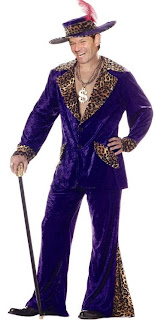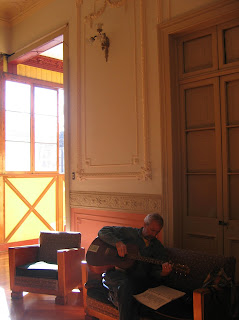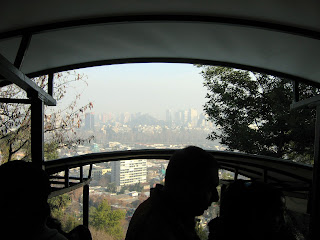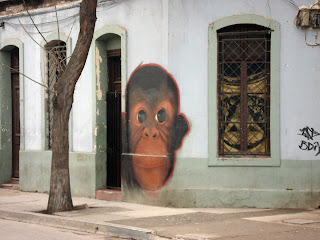new posts in all blogs
Viewing: Blog Posts Tagged with: Not YA, Most Recent at Top [Help]
Results 1 - 14 of 14
How to use this Page
You are viewing the most recent posts tagged with the words: Not YA in the JacketFlap blog reader. What is a tag? Think of a tag as a keyword or category label. Tags can both help you find posts on JacketFlap.com as well as provide an easy way for you to "remember" and classify posts for later recall. Try adding a tag yourself by clicking "Add a tag" below a post's header. Scroll down through the list of Recent Posts in the left column and click on a post title that sounds interesting. You can view all posts from a specific blog by clicking the Blog name in the right column, or you can click a 'More Posts from this Blog' link in any individual post.
I’ve neglected to cross-post my last few reviews for Guys Lit Wire (Bomb by Sheinkin and Sumo by Pham, if you’re interested), but Spillover. Oh my god, this book was awesome and I loved it. If I’d read it when it came out last year, it would have easily topped my list of favorite books of 2012. But since I didn’t actually have a chance to read it until this past March, I’ll have to settle for putting it on my 2013 list.
~~~~~~~~~~~~~~~~~~~~~~~~~~~~~~~~~~~~~~~~~~~
 Pick an infectious disease.
Pick an infectious disease.
Influenza. Ebola. Bubonic plague. SARS. AIDS. I could go on.
Whatever disease you chose, there’s a good chance the pathogen that causes it originated in an animal and then jumped to humans. “This form of interspecies leap is common, not rare; about 60 percent of all human infectious diseases currently known either cross routinely or have recently crossed between other animals and us,” writes David Quammen. Such pathogens are known as zoonoses, and the moment when a pathogen jumps from one species to another is called spillover.
In Spillover: Animal Infections and the Next Human Pandemic, Quammen investigates a handful of zoonoses and how they spilled over, traveling all over the world and going into the field to speak to doctors, scientists, and survivors. He joins a biologist in Gabon who is conducting a biological survey of Central African forests, visits the “wet markets” of Guangdong, China, and helps trap monkeys and bats in Bangladesh. Along the way, he talks to men who were in the village of Mayibout 2 when Ebola struck in 1996, the doctors in Singapore who treated patients suffering from what was later identified as SARS but at first seemed merely a severe case of pneumonia, scientists who identified previously unknown diseases and tracked them to their original hosts, and many others.
Which would make for compelling reading on its own. Yet what really pushes this past compelling to outstanding is Quammen’s prose, sometimes wry (as when he notes “If you’ve followed all that, at a quick reading, you have a future in biology” after a paragraph-long description of the life stages of the Anopheles mosquito, and later “Mathematics to me is like a language I don’t speak though I admire its literature in translation.”), always sharply observant and erudite.
But for all the in-depth sections explaining scientific, medical, or epidemiological terminology, this is not a dry, detached scientific discourse. In a way, Spillover is about the human experience of infectious zoonotic disease–both those who are stricken and those who investigate it. And I could not put this book down. It’s timely and relevant, endlessly fascinating, and eloquently written.
Spillover happens to be one of three shortlisted titles for the Andrew Carnegie Medal for Excellence in Nonfiction, along with Short Nights of the Shadow Catcher: The Epic Life and Immortal Photographs of Edward Curtis by Timothy Egan and The Mansion of Happiness: A History of Life and Death by Jill Lepore. The winner will be announced at the ALA annual conference on June 30.
Book source: personal (purchased) copy.
* If, like me, you are into books about pandemics, David Dobbs put together a reading list at Slate. I haven’t yet read everything he recommends (must work on that!), but I also want to plug one article he didn’t mention, “Death at the Corners” by Denise Grady from Discover magazine. It’s not about a pandemic, but it is about a zoonotic disease outbreak, and probably THE article sparked my reading interest in infectious diseases.
Filed under:
Non-Fiction,
Not YA,
Reviews 


By:
Trisha, Gayle, and Jolene,
on 6/9/2013
Blog:
The YA YA YAs
(
Login to Add to MyJacketFlap)
JacketFlap tags:
brian switek,
my beloved brontosaurus,
leah rae miller,
the summer i became a nerd,
Fiction,
Non-Fiction,
Not YA,
48hbc,
Add a tag
My Beloved Brontosaurus, concluded
- As I said earlier, I’m not interested in dinosaurs. A few hours ago, I wouldn’t have been able to tell you much more than Tyrannosaurus had short arms, Triceratops had horns, Archeopteryx had feathers, and Velociraptor were those scary dinosaurs from Jurassic Park.
- But! Quoting from p. 121: “However, what we think of as Velociraptor was really Deinonychus. … An actual Velociraptor wouldn’t have been very threatening. While exceptionally well armed, the predator would have been about the size of a turkey, too small to consider a full-grown human a meal.”
- So, needless to say, I learned a lot reading this book. I did struggle to keep all the different dinosaur names and categories straight, and had to stop and refer to the index several times before I could remember what a sauropod was, so some kind of dinosaur ID chart would have been handy (though I suppose that’s what the internet is for…).
- But that’s just me. Otherwise, Switek’s writing is thoroughly engaging, with humor and pop culture references to keep it entertaining, but without overshadowing the solid science. And it’s not so scholarly that I couldn’t understand what Switek was saying.
- It’s about how we know what we know about dinosaurs. So not just this is what we know about dinosaurs, but also how early paleontologists may have reached the conclusions they did, and how scientists since then have come to different conclusions. I think it will interest both dinosaur aficionados and the general science reader.
 The Summer I Became a Nerd by Leah Rae Miller
The Summer I Became a Nerd by Leah Rae Miller
- The book in brief: for the past five years, Maddie has been determined to hide her geeky interests. She’s a cheerleader, dating the quarterback of the football team, and everyone seems to have forgotten the Spectrum Girl incident from sixth grade. Until, desperate to read the final issue of The Super Ones, she sneaks in to her local comic book store and the cute classmate working their recognizes her.
- This is one of those books I’d struggle to review, because while it was a pleasant, temporarily diverting read, and not a bad book, it also didn’t make much of an impact on me. I don’t really have much to say about it.
- There is a support small businesses! angle (Logan–the cute classmate–works at the struggling comic book store his parents own) and Maddie learns that her friends are more tolerant than she thought they’d be, but otherwise… Yeah, I don’t know what else to say about this one.
Today’s stats
Reading time: 4 hours
Blogging time: 35 minutes
Pages read: 404
Filed under:
Fiction,
Non-Fiction,
Not YA 


By:
Trisha, Gayle, and Jolene,
on 6/9/2013
Blog:
The YA YA YAs
(
Login to Add to MyJacketFlap)
JacketFlap tags:
brian switek,
my beloved brontosaurus,
Fiction,
Non-Fiction,
Not YA,
itch,
48hbc,
simon mayo,
Add a tag
I was very indecisive this evening and could not decide what book to read. I picked up Martha Wells’ Emilie & the Hollow World but wasn’t feeling it, so put it down after reading the first chapter. Maybe I’ll get back to it later.
I did finish the next book I tried, which was

Itch: The Explosive Adventures of an Element Hunter by Simon Mayo (fiction)
- The book in brief: Some people baseball cards. Others collect books. {looks around} Itch collect elements. You know, as in lead, sulfur, phosphorous. His collection is pretty small, since he has to buy what he can’t scavenge from home and other elements are too dangerous to sell. When Itch gets his hands on what he thinks is uranium, but turns out to be an extremely radioactive unknown element that could change the world, he must figure out how to keep the rocks out of the villains’ clutches.
- Continuing the trend of reading long, 400+ page books for this year’s challenge…
- It’s overly long. It takes a while before the radioactive rock part of the plot is introduced, and I thought the denouement dragged a bit. Also, there’s reluctant reader appeal in terms of plot and characters, but I think the length will turn off some potential readers.
- On the other hand, how often do you see a middle grade/YA fiction storyline with this much science that doesn’t involve cloning, genetic engineering, or extreme weather? If you can think of other recent books, let me know in the comments!
- Another thing I liked: kids in school think Itch is weird, so he is very close to, and has positive relationships with, his younger sister and a female cousin.
- Includes an author’s note with some background information about the scientific topics that are mentioned during the story.
- Possible readalikes: The Project by Brian Falkner (which is a much shorter book), the Alex Rider series by Anthony Horowtiz (except Alex is a trained spy and Itch is not), maybe Icecore by Matt Whyman. And Digit by Anabel Monaghan has a similar geek-whose-love-of-math/elements-leads-them-to-a-discovery-with-serious-like-we’re-talking-national-security-here-implications plot.
which put me in a scientific mood, so I followed that up with the first third of
 My Beloved Brontosaurus: On the Road with Old Bones, New Science, and Our Favorite Dinosaurs by Brian Switek (adult nonfiction)
My Beloved Brontosaurus: On the Road with Old Bones, New Science, and Our Favorite Dinosaurs by Brian Switek (adult nonfiction)
- I’m not actually interested in dinosaurs per se, but how and why our knowledge of them has changed? And what “they’ve begun to teach us about evolution, extinction, and survival”? I’ll give a book about that a try.
- Hey, he quotes Mike Brown in How I Killed Pluto and Why It Had It Coming.
- Switek is a genial paleontological tour guide, part of what I’m beginning to consider the Mary Roach Road Trip School of Science Writing. Case in point: chapter three, “Big Bang Theory,” about dinosaur sex.
Then I decided I needed to go to sleep and will finish the book in the morning.
Today’s stats
Time read: 4 hours 9 minutes
Blogging time: 50 minutes
Pages read: 511
Filed under:
Fiction,
Non-Fiction,
Not YA 

 This isn’t a review as much as it is a brief exhortation to read Quiet: The Power of Introverts in a World That Can’t Stop Talking by Susan Cain regardless of whether you consider yourself an introvert or extrovert.
This isn’t a review as much as it is a brief exhortation to read Quiet: The Power of Introverts in a World That Can’t Stop Talking by Susan Cain regardless of whether you consider yourself an introvert or extrovert.
For all the fascinating information and insights, what mattered more, as I read the book, was the sense of validation it gave me. Maybe it says something about me as a person (or should that be, as an introverted reader?), but reading a magazine article or hearing a random speaker *say* that there are advantages associated with being an introvert didn’t have quite the same impact or authority as reading a full-length book packed with personal anecdotes, summaries of studies, and interviews with professors of psychology. This is one of those books I wish had been around when I was younger, because so much of what Cain writes about rang true.
Cain points out that in today’s world—and especially in American culture—shyness and introversion are seen negatively, that these are traits we often think we need to be cured of, while being outgoing and extroverted is prized and admired. Instead, we need to acknowledge not only that the traits associated with being introverted can be beneficial, but also that introverts and extroverts are different, without automatically valuing one over the other.
Book source: public library.
Blogging/reading time: 2 hours 44 minutes (I’d started the book a couple days ago, and finished reading it this morning)
Filed under:
Non-Fiction,
Not YA 







 The Russian Far East, early December 1997.
The Russian Far East, early December 1997.
Vladimir Markov is dead, killed in gruesome fashion. The killer is obvious: a Siberian tiger. What little remains of Markov’s body is torn and tattered. When Yuri Trush arrives at Markov’s cabin, he records the scene with a video camera.
The camera doesn’t waver as it pans across the pink and trampled snow, taking in the hind foot of a dog, a single glove, and then a bloodstained jacket cuff before halting at a patch of bare ground about a hundred yards into the forest….
The temperature is thirty below zero and yet, here, the snow has been completely melted away. In the middle of this dark circle, presented like some kind of sacrificial offering, is a hand without an arm and a head without a face. Nearby is a long white bone, a femur probably, that has been gnawed to a boneless white. (p. 14-15)
Trush lead the Bikin unit of Inspection Tiger, an agency charged with investigating forest crimes, specifically those involving tigers. Inspection Tiger was created to protect Russian wildlife—Primorye territory, bordered by China and North Korea, is a Boreal Jungle, as John Vaillant terms it, “unique on earth, and it nurtures the greatest biodiversity of any place in Russia” (p. 25). It’s home to the most valuable timber in the Far East, and the animals that make their home in the taiga are just as valuable. For most people living there, the animals provide essential sustenance. Poaching, though illegal, is common because of the widespread poverty. However, a few poachers target not wild boars or badgers, but the most fearsome creature in the taiga. A tiger carcass will fetch $30,000 on the black market, a stunning amount of money, especially when you consider that most people in Primorye may not make $1,000 in one year. Inspection Tiger tries to stop poaching, but in this case, the tiger is dangerous, attacking and eating humans. It must be stopped.
At its heart, The Tiger: A True Story of Vengeance and Survival is not just the study of a tiger. Vaillant uses the circumstances of Markov’s death and the hunt for the tiger that killed him as the framework for an absorbing exploration of the confluence of history (both natural and Russian), geography, and ecology in Primorye, and of the relationship between humans and tigers living there, focusing on one particularly shocking and fascinating incident. Some readers may consider Vaillant’s scope too broad, with digressions into human evolution and predators in other parts of the world that slow the momentum of the narrative; I found them fascinating.
Perhaps the most haunting, disturbing part about Markov’s death is the calculation with which the tiger deliberately stalked Markov and, later, its second victim. The tiger, it seems, held a grudge against Markov and the results were brutally obvious.
Book source: public library
Adult Nonfiction
Published by Alfred A. Knopf in 2010
ISBN 9780307268938
Cross-posted at Guys Lit Wire.
Filed under:
Non-Fiction,
Not YA 

Cross-posted at Guys Lit Wire.
The Guys Lit Wire annual book fair is going on right now! Please support the Ballou Senior High School Library by purchasing a book or two (or more) on their behalf.
 A woman finds herself in a park, her body aching, with no memory of who she is or what she was doing. She survived some kind of attack–the ring of motionless bodies surrounding her is an obvious clue–and finds a letter in her jacket pocket which begins
A woman finds herself in a park, her body aching, with no memory of who she is or what she was doing. She survived some kind of attack–the ring of motionless bodies surrounding her is an obvious clue–and finds a letter in her jacket pocket which begins
Dear You,
The body you are wearing used to be mine. The scar on the inner left thigh is there because I fell out of a tree and impaled my leg at the age of nine. The filling in the far left tooth on the top is a result of my avoiding the dentist for four years. But you probably care little about this body’s past. After all, I’m writing this letter for you to read in the future. Perhaps you are wondering why anyone would do such a thing. The answer is both simple and complicated. The simple answer is because I knew it would be necessary.
Killer opening, right? And, for the most part, what follows lives up to the promising start. Which is saying something, since the book is nearly 500 pages long.
The letter writer, Myfanwy Thomas, warns the woman reading the letter that she is in terrible danger. The original Myfanwy (rhymes with Tiffany) considerately gives her the choice of starting a new life, with a new identity, or continuing to live Myfanwy’s life to find out what happened her. New Myfanwy is no idiot. She’ll take the new life, thank you very much. Why would she want the old Myfanwy’s life, when strange people wearing latex gloves want to harm her? Only, before she can follow Myfanwy’s instructions, she is attacked. She has no idea how the people after Myfanwy have found her so quickly, but it changes her mind about which route to take. She will remain Myfanwy Thomas. And in a few days, she will go to work as if nothing happened to her and try to figure out which of her colleagues betrayed her.
If she can find the time to investigate, that is. Myfanwy is a Rook of the Checquy Group, which exists to protect England from supernatural dangers. Okay, Myfanwy’s an administrator, a paper pusher, but she’s very good at her job and she knows it. Well, the new Myfanwy knows that the old Myfanwy was good at her job, but trying to hide the fact that she remembers nothing about her old life while reviewing the budget for the removal of plague-infected bodies, observing the interrogation of a man apprehended by the Checquy, and dealing with a sentient fungus, among other things, is not easy.
The reader learns about the Checquy and original Myfanwy’s life along with the new Myfanwy, through letters and the contents of a giant purple binder the original Myfanwy wrote before her memories were taken from her. These sections are informative without feeling infodump-y. Plus, they’re filled with mentions of past supernatural threats (or assets, in some instances) Myfanwy had to deal with that, many of which were refreshingly imaginative and frequently hilarious.
This, and the distinct voices and personalities of the two Myfanwys, make Daniel O’Malley’s The Rook a clever and entertaining and very fun read. Yeah, some of the chess-related aspect of the Checquy’s structure felt a bit underdeveloped (why, exactly, organize it around chess?), and, once the plot really gets going, some Myfanwy’s letter intrude on t
 Are you a typography geek, able to identify fonts used in books, menus, and corporate logos? Or is Comic Sans the only font you recognize? Regardless of where you fall, Simon Garfield’s Just My Type is a fascinating look at fonts.
Are you a typography geek, able to identify fonts used in books, menus, and corporate logos? Or is Comic Sans the only font you recognize? Regardless of where you fall, Simon Garfield’s Just My Type is a fascinating look at fonts.
Just My Type is not a font identification guide or a chronological history of fonts. I’m not actually sure how Garfield organized the book’s chapters; after discussing how desktop computing revolutionized our relationship with type, he dives into the history of the aforementioned Comic Sans and the animosity many people feel towards it. Garfield also finds the time to discuss legibility vs. readability, the ampersand (did you know that while “long treated as a single character or glyph, the ampersand is actually two letters combined – the e and the t of the Latin ‘et’”? I had no idea!), DIY typography, and more, while also jumping around through time to discuss the creation and influence of significant fonts, like Helvetica and Baskerville, among others.
So while there were times I wished for more organizational clarity, I also found it stimulating to not know where Garfield would head next. Would it be a discussion of typographic errors in movies, where fonts were used in movies set prior to the font’s creation? Pirated fonts and the lack of intellectual property rights where fonts are concerned? The fonts used in the 2008 presidential campaigns?
Just My Type was originally published in Great Britain last year and it retains its Britishness in the American edition. Garfield proves a lively and opinionated guide to the world of fonts, so if you’re at all interested in fonts and typography, this is very much worth a look.
Book source: the bookstore, via my wallet.
Cross-posted at Guys Lit Wire.
Filed under:
Non-Fiction,
Not YA,
Reviews 







0 Comments on
Just My Type by Simon Garfield as of 1/1/1900
 Nearly five years ago, on August 25, 2006, as a result of a vote at the meeting of the International Astronomical Union, Pluto lost its status as a planet.
Nearly five years ago, on August 25, 2006, as a result of a vote at the meeting of the International Astronomical Union, Pluto lost its status as a planet.
Sure, people had recognized the oddity of Pluto since its discovery by Clyde Tombaugh, but while “it looked and behaved like no other planet known, there was not other way to classify it, so it became accepted as the ninth planet.” So how did we get to the point at which Pluto’s planetary status was questioned?
In 1999, Mike Brown was a young astronomer with a hunch that, despite accepted astronomical wisdom, there was another planet beyond Pluto. He and fellow astronomer made a friendly bet about whether or not a new planet would be found by the end of 2004, with the loser paying up in the form of five bottles of champagne. The only potential snag Brown thought of at the time was, how exactly do you define what a planet is?
Beginning with this bet, How I Killed Pluto and Why It Had It Coming details how Brown went on to discover several new, um, planets. At least, they were considered planets when their discovery was first announced, despite Brown’s belief that they, and Pluto, were not actually planets. It didn’t matter that one of them was slightly bigger than Pluto; he was adamant that it wasn’t a planet and neither was Pluto. Despite Brown’s strong feelings on the matter, the choice of terminology wasn’t up to him. Instead, it was up to the members of the International Astronomical Union to define what planet means, and whether or not Pluto, and thus also Brown’s discoveries, were in fact planets.
Part astronomical history, part astronomy lesson, part memoir of Brown’s family life during the decade, How I Killed Pluto and Why It Had It Coming is a surprisingly entertaining and humorous read.* (Although the book does not include a bibliography or further reading section, much to my dismay.) Brown writes in an accessible, conversational style that makes his passion for astronomy obvious. His expertise in his field is clear, but he shares his knowledge simply and lucidly for a lay audience. The book was published for an adult audience and some teens will not be as interested in the details of Brown’s family life, but may find inspiration in how his childhood interest in planets led to a career as an (depending on your point of view, planet-killing or planet-redefining) astronomer. I found a couple of moments in the chronology a bit confusing, but overall, How I Killed Pluto… is a stimulating look at our solar system and how Brown deliberately undertook his search for new planets.
Book source: public library.
* It also garnered my favorite author blurb of the year thus far, courtesy of Neil deGrasse Tyson on the back cover, which begins: “Finally I have someone to whom I can forward the hate mail I get from schoolchildren. After all these years, the real destroyer of Pluto has confessed.”
Cross-posted at Guys Lit Wire.
Filed under:
Non-Fiction,
Not YA,
Reviews 
 0 Comments on How I Killed Pluto and Why It Had It Coming by Mike Brown as of 1/1/1900
0 Comments on How I Killed Pluto and Why It Had It Coming by Mike Brown as of 1/1/1900
 Pick an infectious disease.
Pick an infectious disease.




 My Beloved Brontosaurus: On the Road with Old Bones, New Science, and Our Favorite Dinosaurs by Brian Switek (adult nonfiction)
My Beloved Brontosaurus: On the Road with Old Bones, New Science, and Our Favorite Dinosaurs by Brian Switek (adult nonfiction) This isn’t a review as much as it is a brief exhortation to read Quiet: The Power of Introverts in a World That Can’t Stop Talking by
This isn’t a review as much as it is a brief exhortation to read Quiet: The Power of Introverts in a World That Can’t Stop Talking by  The Russian Far East, early December 1997.
The Russian Far East, early December 1997. A woman finds herself in a park, her body aching, with no memory of who she is or what she was doing. She survived some kind of attack–the ring of motionless bodies surrounding her is an obvious clue–and finds a letter in her jacket pocket which begins
A woman finds herself in a park, her body aching, with no memory of who she is or what she was doing. She survived some kind of attack–the ring of motionless bodies surrounding her is an obvious clue–and finds a letter in her jacket pocket which begins Are you a typography geek, able to identify fonts used in books, menus, and corporate logos? Or is
Are you a typography geek, able to identify fonts used in books, menus, and corporate logos? Or is  Nearly five years ago, on August 25, 2006, as a result of a vote at the meeting of the International Astronomical Union, Pluto lost its status as a planet.
Nearly five years ago, on August 25, 2006, as a result of a vote at the meeting of the International Astronomical Union, Pluto lost its status as a planet. When we think of history and history changers, we often think of people. Maybe laws, like Brown v. Board of Education, or devices, like the computer. Molecules generally are not the first thing that come to mind.
When we think of history and history changers, we often think of people. Maybe laws, like Brown v. Board of Education, or devices, like the computer. Molecules generally are not the first thing that come to mind. When I first heard about
When I first heard about  From the first outbreak of infection to “Victory in China” day about a decade later, over 600 million people lost their lives. Although the zombie war (which “goes by many names: ‘The Crisis,’ ‘The Dark Years,’ ‘The Walking Plague,’ as well as newer and more ‘hip’ titles such as ‘World War Z’ or ‘Z War One’) is over, people, and countries, are still trying to recover, and the world has irrevocably changed.
From the first outbreak of infection to “Victory in China” day about a decade later, over 600 million people lost their lives. Although the zombie war (which “goes by many names: ‘The Crisis,’ ‘The Dark Years,’ ‘The Walking Plague,’ as well as newer and more ‘hip’ titles such as ‘World War Z’ or ‘Z War One’) is over, people, and countries, are still trying to recover, and the world has irrevocably changed.






After reading and watching World War Z, this is so freaking scary! Fiction closely based on truth is always the most frightening to me.
Everything is very open with a very clear explanation of the challenges.
It was truly informative. Your site is useful. Thank you for sharing!